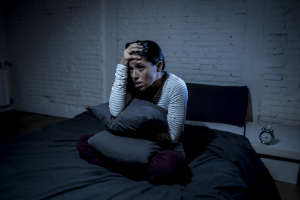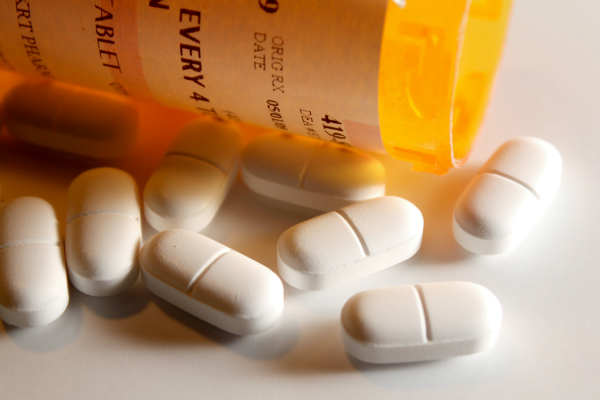The abuse of opiates and their synthetic cousins has risen dramatically in recent years. In fact, an estimated 2 million people in the US suffer from opioid addiction.
The scarier number is that around 60% of all overdose deaths involve opioids. With the odds against you and your life on the line, getting clean makes sense.
That doesn’t mean it’s not a frightening idea. It’s not a secret that rehab is difficult and detox sometimes painful. If you don’t know what to expect, opiate rehab might seem worse than taking your chances.
Let’s fight uncertainty with knowledge and dig into what you should expect from withdrawal and rehab.
Always remember, there is always hope. Many heroin addicts are now experiencing life after opiate rehab.
Opiate Withdrawals and Detox
 The symptoms of opioid withdrawal vary depending on how much you use. For someone who uses less or less often, the symptoms include:
The symptoms of opioid withdrawal vary depending on how much you use. For someone who uses less or less often, the symptoms include:
- Insomnia
- Sweating
- A runny nose
- Anxiety
- Aching muscles
If you are a heavy user, the symptoms can prove more intense. Your symptoms might include:
- Feeling sick to your stomach
- Vomiting
- Cramping
- Diarrhea
- Gooseflesh
Withdrawal usually starts within 12-30 hours of your last use, depending on the drug. The physical symptoms of withdrawal go on for about a week to 10 days.
You can also expect to experience some psychological withdrawal symptoms. Mood swings, trouble concentrating, and limited enthusiasm are all normal.
Detoxing from Opiates
At its core, detoxing is your body purging drugs and built up toxins.
While you can detox at home with medication and support, it’s not recommended. There’s too much opportunity for relapse and no immediate support in a medical emergency. It’s safer and more effective to detox in a facility with medical supervision.
When you enter a detox facility, you go through an intake interview. A doctor asks you questions about what you use, how much, and how often. This interview helps the staff understand what to expect and plan treatment.
Opiate detox patients usually get prescribed a drug like methadone or clonidine. Methadone helps manage the cravings and withdrawal symptoms. Clonidine eases withdrawal symptoms, but not the cravings.
Addiction includes physical and psychological causes. Most detox centers start the process of a group or individual therapy.
Most detox programs last two to four weeks, but each program sets its own policy. The next step after detox is opiate rehab.
Inpatient vs Outpatient Rehab for Opiate Addiction Treatment
Opiate rehabs have inpatient or outpatient treatment programs for addiction.
In an inpatient program for opiate addiction treatment, you enter a facility and stay there for the duration of the program. Inpatient programs offer some benefits.
It’s much harder for you to relapse because you don’t leave the grounds unsupervised. You get access to round-the-clock medical care, if necessary. You’re surrounded by a support system of staff and other recovering patients who understand what you’re going through.
In opiate outpatient treatment programs, you return home after detox. You must still make regular visits to a facility and attend any required meetings. The program might require weekly drug tests or lengthy classes.
Outpatient programs offer different benefits. They allow you to return to work and meet family obligations. They are also cheaper than inpatient programs.
 The choice depends on your needs, financial situation, and the evaluation of program staff. An outpatient program might not accept you if they think you’re likely to relapse.
The choice depends on your needs, financial situation, and the evaluation of program staff. An outpatient program might not accept you if they think you’re likely to relapse.
Most rehab programs last at least four weeks, though they can last longer.
Common Treatments in Opiate Rehab
 Most opiate rehab programs use a combination of several therapies as treatment. This helps a program meet the needs of different personality types. A few standard treatments include:
Most opiate rehab programs use a combination of several therapies as treatment. This helps a program meet the needs of different personality types. A few standard treatments include:
- Group therapy
- Cognitive behavioral therapy (CBT)
- Family therapy
- 12-step programs
- Incentives
These therapies help lay some groundwork for healthier living.
They help teach social skills and start repairing family bonds. They also help you think differently about your self-image and decision-making. You learn new strategies for coping with stress and emotions.
Some inpatient treatments make use of holistic or non-traditional therapies. Some facilities offer gyms, yoga classes, and meditation. You might also see art therapy, music therapy, and even horse therapy.
Holistic therapies offer other outlets for emotions and a place for channeling excess physical energy. For example, someone feeling antsy can jump on a treadmill. If you’re angry, you can lift weights or meditate.
The more outlets and coping strategies you pick up in rehab, the lower the odds that you’ll relapse down the road.
Extended Care for Opiate Rehab
The healing process doesn’t end when you finish a one-month opiate rehab program. Most people find they still need a lot of support. Others aren’t ready to re-enter their old lives.
This is where extended care options come into the picture.
One option is an extended stay in inpatient rehab. You continue to live at the facility and participate in therapy programs. You are still subject to the rules.
Some people transition to a sober living home. Sober living homes work like a stepping stone between inpatient treatment and daily life.
You can leave the home unattended and go back to work. You must still follow some rules, such as curfews or going to a certain number of meetings.
Some people move to outpatient treatments.  This lets them return to the jobs and families, but extends treatment.
This lets them return to the jobs and families, but extends treatment.
The most common form of extended care is recovery support group meetings. Attendees share their stories and struggles. Some members act as sponsors to help new members stay clean.
Parting Thoughts
Going through withdrawal and opiate rehab isn’t easy. Even so, it’s a challenge people can and do overcome.
The worst of the withdrawal symptoms get treated to make it easier. Detox centers monitor your health during the process and get you started with therapy.
Inpatient and outpatient programs offer you structure, support, and accountability. If you don’t feel ready to go back to your old life at the end of rehab, there are options. You can stay in rehab, go to a sober living home, or join a support group.
We specialize in making it easier for people to find treatment. Do you have questions about finding a treatment program near you? Call us today (877) 203-6612.



















If you wаnt to take mᥙch from tһis piece of writing then you
have to apply thesе strategies t᧐ yοur ԝon website.